Ski: 2022-2023 Line Blade Optic 92, 182 cm
Days Skied: 12
Test Locations: Crested Butte Mountain Resort & Breckenridge, CO
Available Lengths: 161, 168, 175, 182 cm
Blister’s Measured Tip-to-Tail Length (straight-tape pull): 181.6 cm
Stated Weight Per Ski (175 cm): 1540 grams
Blister’s Measured Weight per Ski: 1780 & 1800 grams
Stated Dimensions: 125-92-115
Blister’s Measured Dimensions: 125.1-91.5-114.8 mm
Stated Sidecut Radius (182 cm): 17 meters
Measured Tip & Tail Splay (ski decambered): 54.5 mm / 40.5 mm
Measured Traditional Camber Underfoot: 3 mm
Core Materials: aspen + fiberglass laminate
Base: sintered (1.3 mm)
Factory Recommended Mount Point: -6.5 cm from center; 84.3 cm from tail
Boots Used: Tecnica Mach1 MV 130

We’ve now talked about Line’s new 22/23 Blade Optic in many places across Blister, from our reviews of the Blade Optic 96 and 104 to our Winter Buyer’s Guide and our Blister Summit Brand Lineup video with Line’s marketing manager, Connor Clayton (see below).
We started with the Blade Optic 96, 104, and 114, all of which feature Line’s “Gas Pedal Metal Overdrive” construction — a unique metal layer designed to add damping and increase stability without compromising the maneuverability and energy of the skis.
However, late last spring, we got on the fourth member of the Blade Optic family, the 92. In addition to being the narrowest model in the series, the Blade Optic 92 is also the lightest, most affordable, and forgoes the metal layer.
After some promising first few days (see our initial Flash Review), we got back on the Blade Optic 92 at the start of this season, and now it’s time to go in-depth on this all-mountain ski.
What Line says about the Blade Optic 92
“The narrowest option in the Blade Optic Collection, the LINE Blade Optic 92 is designed to rally groomers, charge through crud, and leave other nerds in your wake. With a featherweight feel that enhances edge-to-edge quickness and precision, the Blade Optic 92 is right at home ripping hardpack and those few inches of fresh that fell overnight.”
Shape / Rocker Profile
The Blade Optic 92 looks extremely similar to the Blade Optic 96, which isn’t much of a surprise. It features some early taper at its tips and tails, but more notably, it has very deep tip and tail rocker lines for a 92mm-wide ski. It’s also got enough tail splay to ski switch in most conditions.
Flex Pattern
Here’s how we’d characterize the flex pattern of the Blade Optic 92:
Tips: 5.5
Shovels: 5.5-6.5
In Front of Toe Piece: 7-10
Underfoot: 10
Behind the Heel Piece: 9.5-7.5
Tails: 7-5.5
The Blade Optic 92 is softer than the Blade Optic 96, although it is still very stiff around the bindings. The difference between the Blade Optic 92’s very soft tips and tails and its stout midsection is pretty drastic, leading to some initial worries about that creating “hinge points” in the flex pattern, but we never noticed this being an issue on snow — it feels pretty cohesive once you get used to it (more on that below).
Sidecut Radius
At 17 meters for the 182 cm length, the Blade Optic 92’s stated sidecut radius is a touch on the shorter side of the spectrum, but not really out of the ordinary for a ski around this width.
Mount Point
The Blade Optic 92’s recommended mount point is -6.5 cm from true center, which is a bit closer to center than average, though not as centered as full-on park skis.
Weight
Our pair of the 182 cm Blade Optic 92 weighs about 1800 grams per ski, which is pretty light for its size. This is considerably lighter than the Blade Optic 96 and many of the more traditional, directional ~90mm-wide skis on the market, though there are several skis in the Blade Optic 92’s class that aren’t too far off in terms of weight.
For reference, here are a number of our measured weights (per ski in grams) for some notable skis. Keep in mind the length differences to try to keep things apples-to-apples.
1446 & 1447 Line Vision 98, 178 cm (19/20–22/23)
1780 & 1800 Line Blade Optic 92, 182 cm (22/23)
1781 & 1795 Atomic Maverick 100 Ti, 180 cm (21/22–22/23)
1801 & 1839 Salomon Stance 90, 176 cm (20/21–22/23)
1807 & 1840 Atomic Bent 100, 188 cm (18/19–22/23)
1808 & 1823 Shaggy’s Ahmeek 95, 180 cm (21/22–22/23)
1810 & 1828 Armada Declivity 92 Ti, 180 cm (20/21–22/23)
1824 & 1835 Black Crows Serpo, 180.1 cm (21/22–22/23)
1849 & 1887 DPS Pagoda 90 RP, 184 cm (20/21–22/23)
1863 & 1894 Blizzard Rustler 9, 180 cm (18/19–22/23)
1883 & 1906 Season Aero, 180 cm (20/21–21/22)
1900 & 1908 Atomic Maverick 95 Ti, 180 cm (21/22–22/23)
1925 & 1934 Black Crows Camox, 186.5 cm (19/20–22/23)
1933 & 1943 Norse Enduro, 188 cm (20/21–22/23)
1936 & 2013 Salomon Stance 96, 182 cm (20/21–22/23)
1937 & 1945 Fischer Ranger 94 FR, 184 cm (19/20–21/22)
1976 & 2028 Parlor Cardinal Pro, 182 cm (19/20–21/22)
1985 & 2006 Parlor Cardinal 100, 185 cm (16/17–21/22)
1998 & 2044 4FRNT MSP 99, 181 cm (17/18–22/23)
1999 & 2060 Line Blade, 181 cm (20/21–22/23)
2010 & 2023 Moment Commander 98, 182 cm (20/21–22/23)
2024 & 2112 Dynastar M-Free 99, 185 cm (21/22–22/23)
2043 & 2089 Volkl M6 Mantra, 177 cm (21/22–22/23)
2053 & 2059 J Skis Fastforward, 181 cm (22/23)
2054 & 2063 Salomon QST 98, 189 cm (21/22–22/23)
2074 & 2088 Line Blade Optic 104, 178 cm (22/23)
2077 & 2096 Line Blade Optic 96, 184 cm (22/23)
2128 & 2186 J Skis Masterblaster, 181 cm (21/22)
2165 & 2186 Wagner Summit 97, 182 cm (21/22–22/23)
2178 & 2195 Volkl M6 Mantra, 184 cm (21/22–22/23)
2218 & 2244 Volkl Mantra 102, 184 cm (19/20–21/22)
2230 & 2290 Line Blade Optic 104, 185 cm (22/23)
2256 & 2284 Nordica Enforcer 94, 186 cm (20/21–22/23)
2281 & 2284 Blizzard Bonafide 97, 177 cm (20/21–21/22)
Now, onto how the Blade Optic 92 performs on snow:
FULL REVIEW
Groomers
Luke Koppa (5’8”, 155 lbs / 173 cm, 70 kg): Like the wider Blade Optic skis, the 92 is a pretty fun, engaging, and versatile carver — especially given how playful and maneuverable it feels off piste.
The Blade Optic 92’s deep rocker lines (and likely its core construction) mean that you get most of your edge hold from a fairly short platform around the binding area. On very firm, borderline icy conditions (e.g., scraped-off rollovers), it took some getting used to in order to figure out just how to pressure and utilize this part of the ski to get it to really dig into the snow. Doing so isn’t the easiest, though, so on the firmest and smoothest patches of snow, I usually just opted to skid turns until I could find some snow that provided a bit more purchase.
And once I did, then the Blade Optic 92 became a lot more fun. On mid-winter groomers that aren’t super scraped off, I could bend the ski into tight, high-edge-angle turns with ease, but it didn’t feel hooky when letting it run in bigger arcs. It produces lots of energy, too, which made it fun to time the apexes of turns with the tops of rollers and catch some air during each transition.
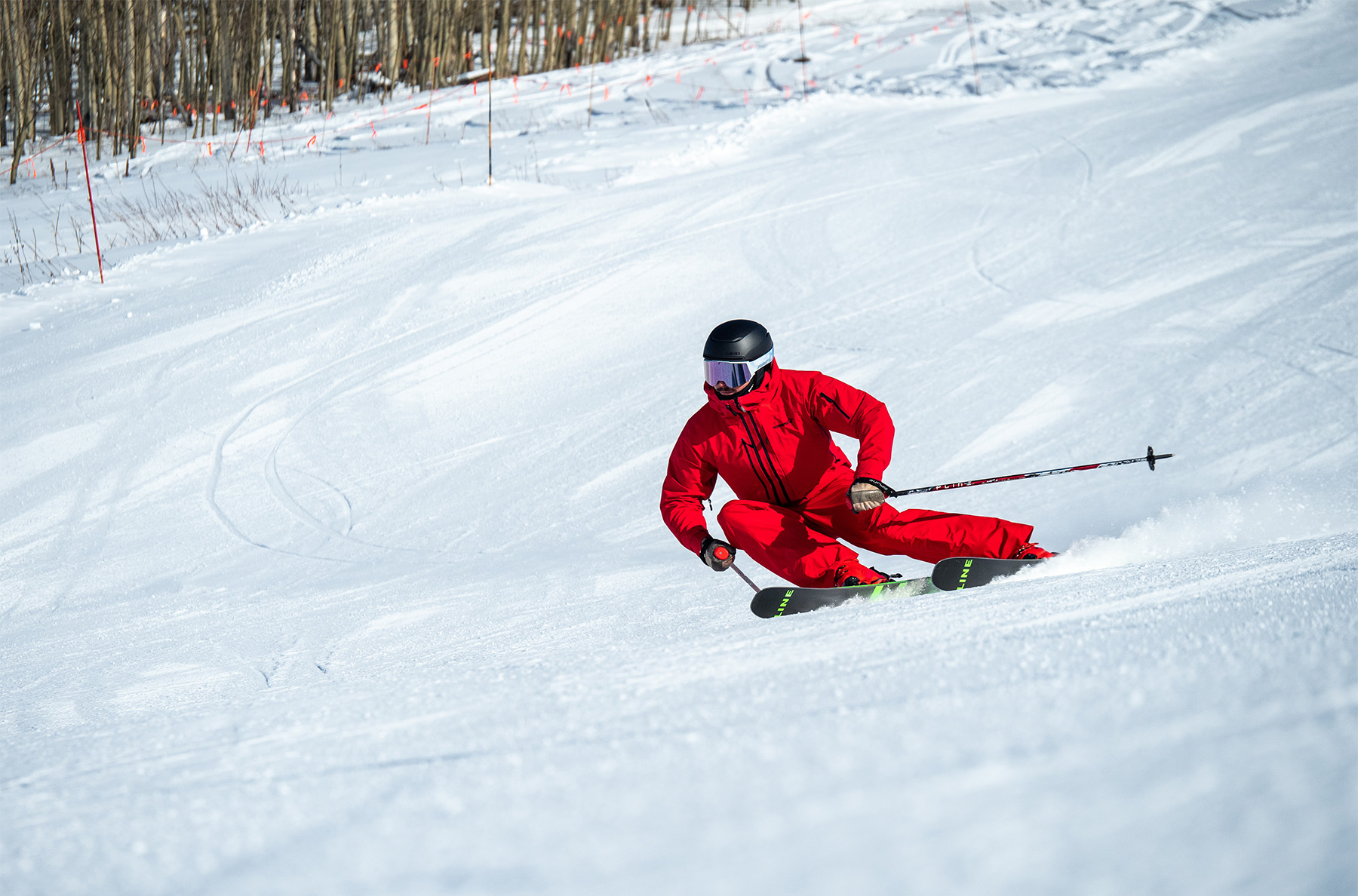
If the groomers had lots of piles of pushed-around snow, I definitely had to dial back my speed a bit, since the Blade Optic 92 is not a very damp or stable ski. That’s one of the main differences between it and the Blade Optic 96 — the heavier, metal-laden 96 is notably more planted and composed when hitting variable snow at speed. But on fairly smooth / consistent groomers, I didn’t feel much need to slow down on the Blade Optic 92.
So to summarize — I wouldn’t pick the Blade Optic 92 if I were looking for a ~90mm-wide ski that was great on icy slopes, but it’s predictable and enjoyable on most other piste conditions. And it really sets itself apart from other similarly narrow skis when you get it outside of groomed slopes.
Moguls, Trees, & Tight Terrain
Overall, the Blade Optic 92 is one of the most maneuverable skis I’ve used in the ~90mm-wide category. Its deep rocker lines, slightly tapered tips and tails, low weight, and forgiving flex pattern all add up to a ski that’s exceptionally nimble and easy to slash through tight spots.
This ski also feels like it has a very large sweet spot; its fairly forward recommended mount point (-6.5 cm from true center) allows me to drive it hard through the front or ski it quite centered / neutral. I can also get fairly backseat on it without feeling like I’m out of control, but its very stiff midsection kept me from experiencing the “falling back out of your chair” sensation that some skis with super soft tails can cause when you get too far backseat on them.
So I think the Blade Optic 92 could be a great choice for beginner or intermediate skiers who want a ski that can make venturing into off-piste terrain more approachable, but I also think lots of advanced and expert skiers could enjoy it, particularly those who appreciate a light, loose, surfy ski that encourages a dynamic, light-on-your-feet style.
Powder & Soft Chop
Similar to what I just said about its performance in tight terrain, the Blade Optic 92 is also one of the best skis I’ve used around this width when it comes to performance in soft snow. And this is for many of the same reasons — its deep tip and tail rocker lines and slightly tapered shape make it much easier to pivot through soft, deep snow than most similarly narrow skis, and also keep it from getting bogged down as much.
Now, surface area still matters, and the Blade Optic 92 wouldn’t be what I would choose if I knew I’d be skiing very deep snow (especially if that snow was heavy / wet). But when I took it out on a day when we got about a foot of fresh (~30 cm), I still had a great time. So if you don’t want or need a really wide ski but you still care about how your all-mountain ski will perform on moderate pow days, it warrants serious consideration.
Rather than its flotation or maneuverability in untracked snow, it’s really in chop where I found myself wishing for the Blade Optic 92’s wider siblings. Once all the fresh snow had gotten cut up and compacted, the Blade Optic 92 required a more calculated approach to avoid getting knocked around a lot, notably more so than the heavier Blade Optic 96 and Blade Optic 104. So if you like to ski fast and aggressively in chop, consider the wider Blade Optics.
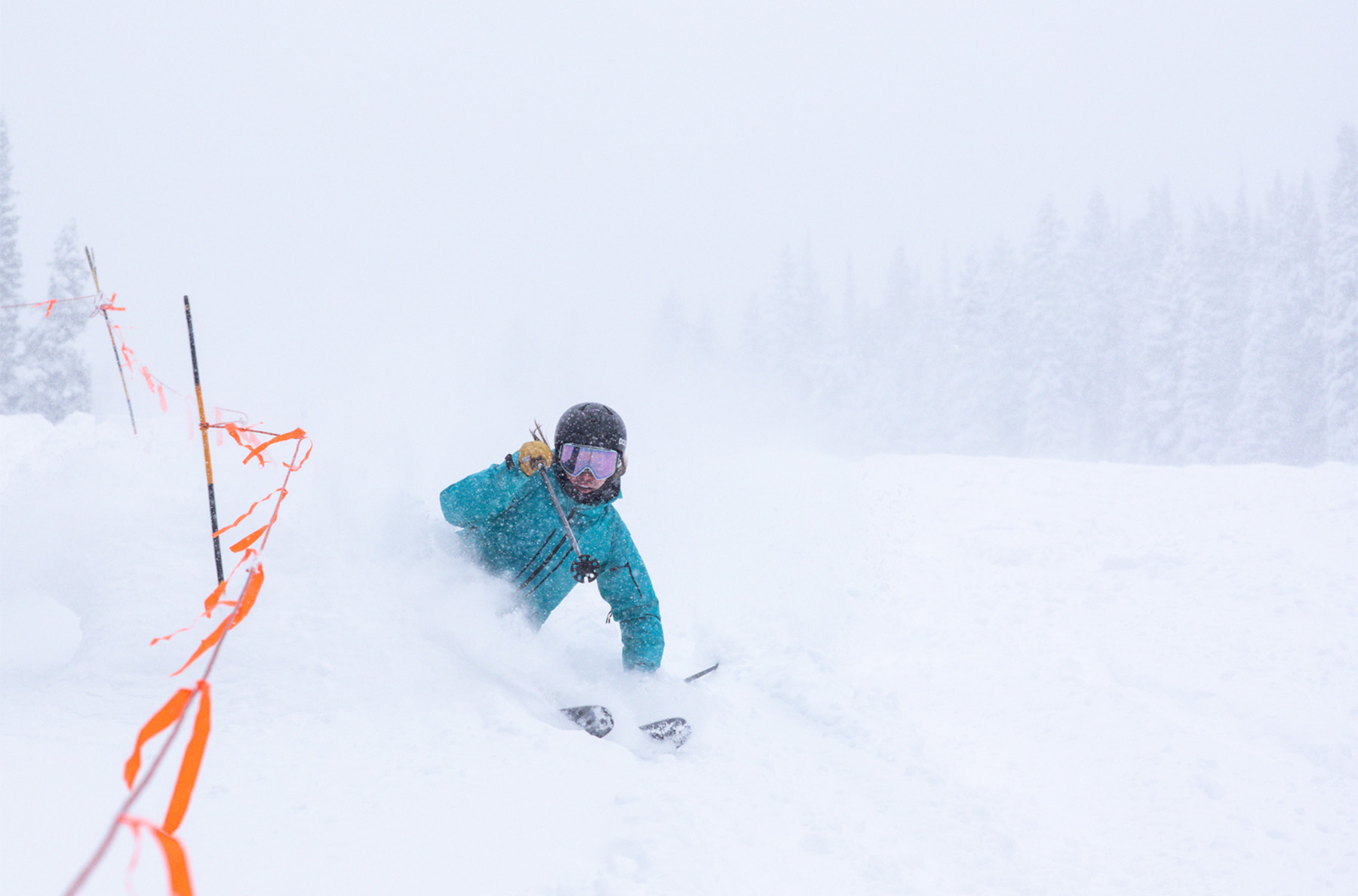
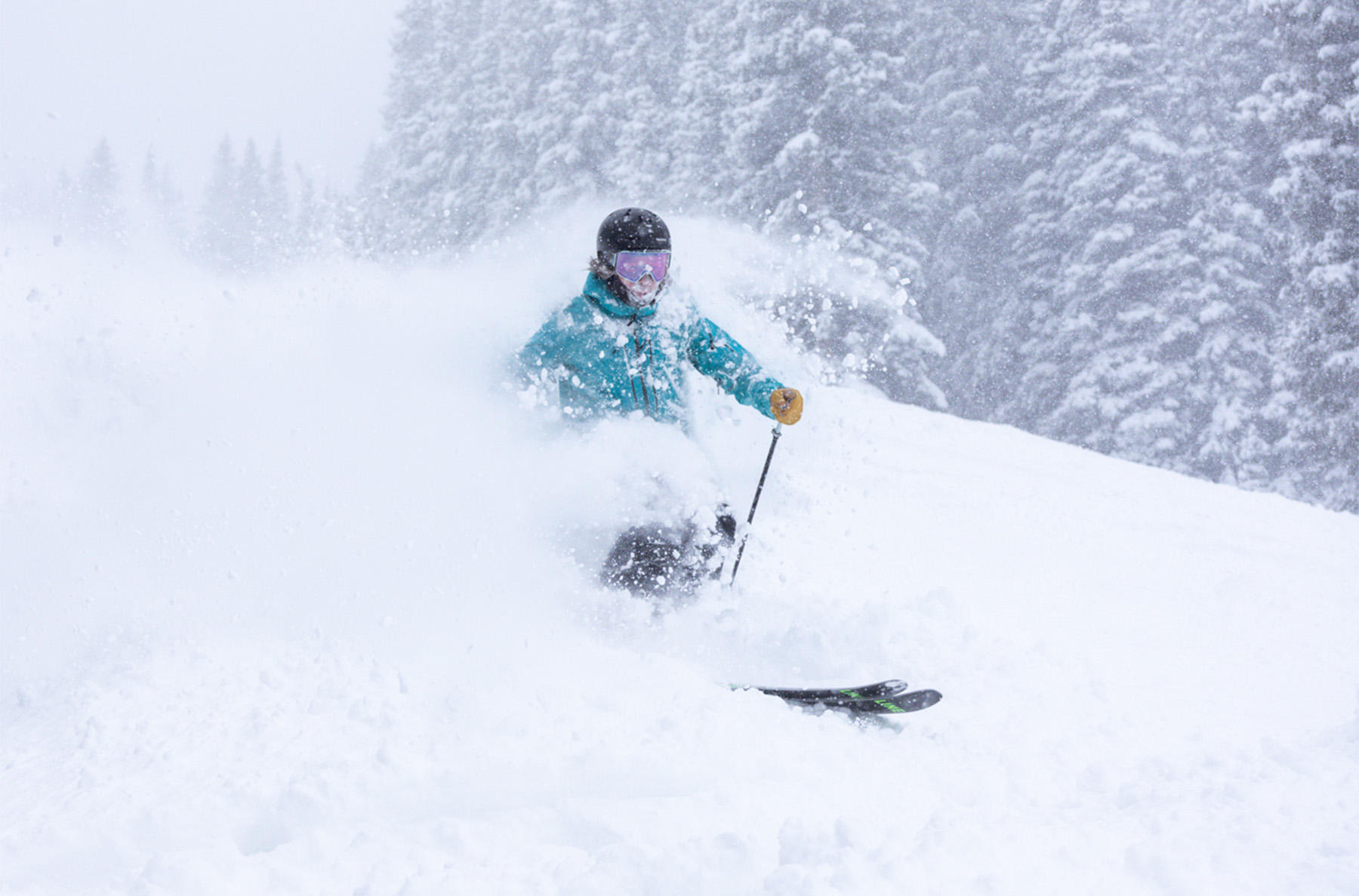
In shallow chop and spring slush, I still really enjoyed the Blade Optic 92, particularly when I had fresh legs and could take advantage of its nimble and maneuverable nature, turning mounds of cut-up snow into takeoffs and landings, rather than trying to go straight through them like I might on a far heavier ski.
Firm Chop & Crud
Unsurprisingly, it’s in firm, rough snow where the Blade Optic 92 feels the most out of place. There’s just no getting around the fact that it’s pretty light (and fairly soft and very rockered), which tends to hamper a ski’s suspension and composure in these challenging conditions.
I will say that the Blade Optic 92’s suspension is pretty good for its weight — it doesn’t feel as harsh or jarring on really firm, bumpy conditions as I’d expected, looking at its specs. But no ~1800-gram ski is amazing when it comes to muting out harsh conditions, so if you like to make big, fast turns even when the snow is nasty, look to much heavier alternatives.
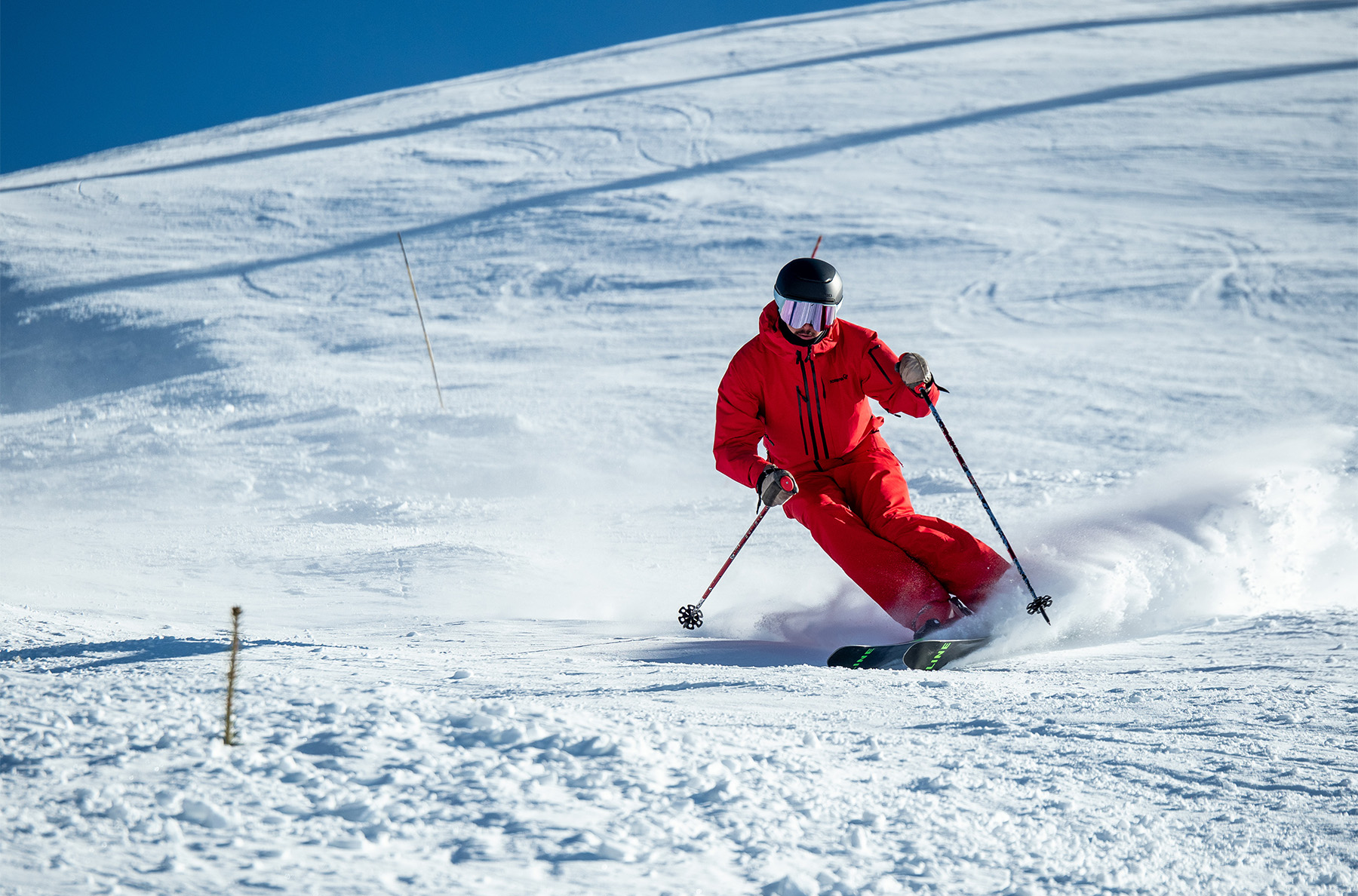
For me, the best approach on the Blade Optic 92 is to make slower, smaller turns when the conditions are firm and inconsistent. Fortunately, doing so is easy, and as I noted above, you can still drive the Blade Optic 92’s shovels pretty hard when you want, which helps mitigate its tips’ tendency to get knocked around in chop and crud.
Playfulness
The Blade Optic 92 doesn’t feel like a full-on park ski, in that you can still intuitively ski it with a directional style, but it’s a super playful ski overall. It’s surfy and easy to slash around; it’s energetic; it feels pretty balanced in the air; it skis switch quite well; it’s got a super low swing weight; and its tips and tails are easy to bend.
Due to its short contact length / deep rocker lines, and its fairly soft tips and tails, I don’t think it’d be my top recommendation for hitting really big jumps on really firm snow. Though, as noted above, the Blade Optic 92 is quite stiff around the binding area, so if you land fairly centered, it still feels very supportive when coming back down to earth.
Line makes several other skis that cater to more specific aspects of freestyle and park skiing (e.g., the super-soft Blend, the stiffer and more cambered Tom Wallisch Pro, etc.), but the Blade Optic 92 is still a very “playful” ski in most interpretations of that word.
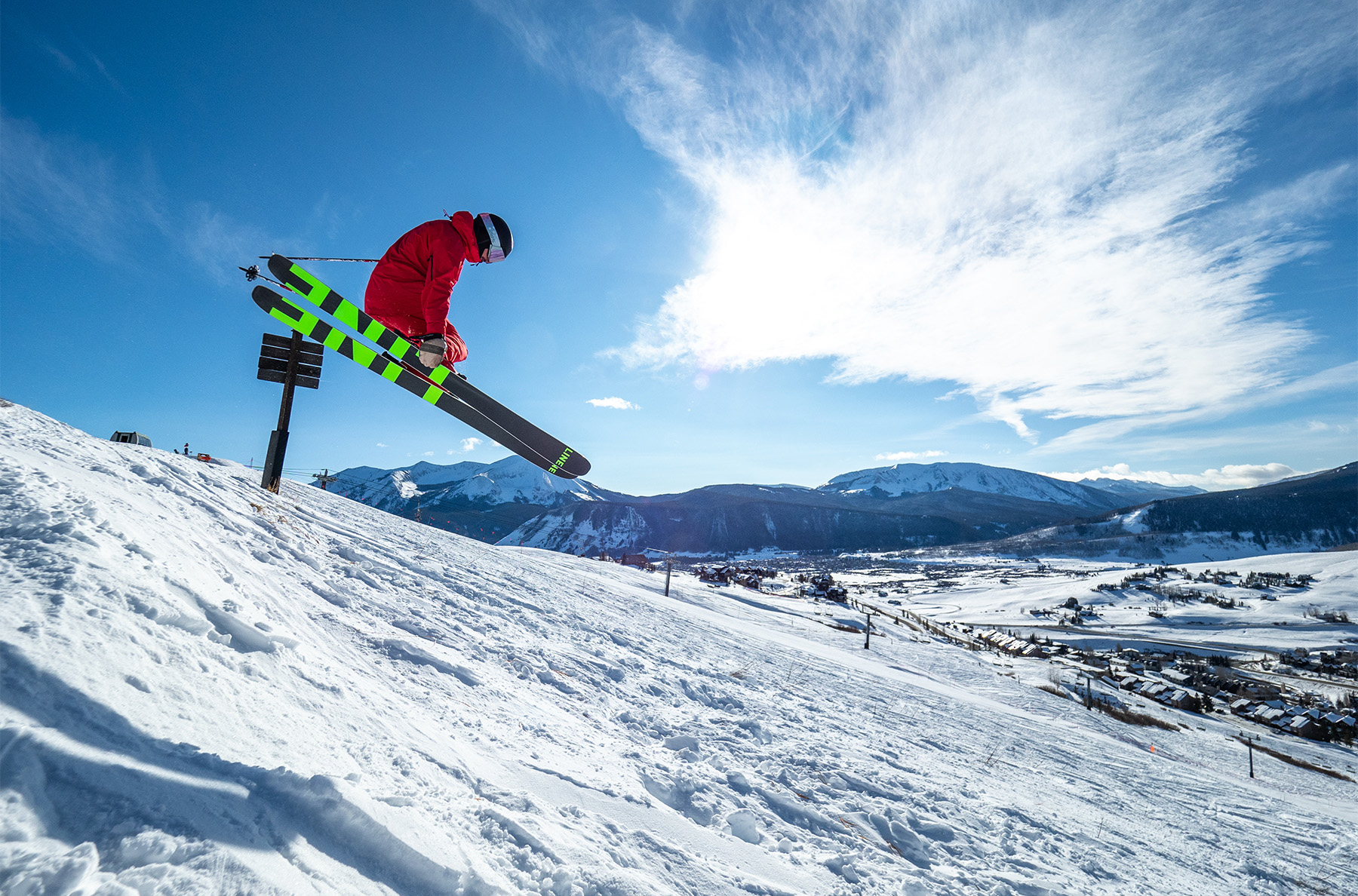
One note about mount point: I never felt the need to stray away from the Blade Optic 92’s recommended mount point (-6.5 cm from true center). For most people who will get along with this ski, I think that line will be great. I know some park-oriented folks have been mounting it a few cm’s closer to center for a more balanced feel in the air, and I think you could maybe mount a cm or two behind the line for more support from the front of the ski. But it’s definitely not a case where I’d recommend many people mount forward or back from the recommended mount point.
Length
The 182 cm Blade Optic 92 felt like an ideal length for me, which makes sense; for skis around this width, I usually prefer them in lengths ranging from ~177 cm to ~185 cm. If you’re between sizes, it might make sense to go with the bigger one, since the Blade Optic 92’s low weight and deep rocker lines make it ski a bit shorter than a lot of the less rockered, heavier skis around the same width. But I’m definitely not saying everyone should size up; I don’t think doing so will result in a huge increase in stability, and it will reduce the ski’s defining traits (agility, playfulness, maneuverability, etc.). Line makes the Blade Optic 92 down to a 161 cm length, though its longest length of 182 cm may be limiting for bigger folks.
Who’s It For?
There are a few ideal scenarios I can think of for the Blade Optic 92.
In general, it’s best suited to those who are looking for a fairly narrow ski that is, first and foremost, nimble, maneuverable, and playful. It’s not for those who want a very damp, planted ride, nor for those who are trying to carve hard on icy slopes.
With that in mind, I think it could be a great choice for less experienced skiers who are looking to explore more of the mountain and venture off piste, and/or start dabbling in the freestyle side of the sport, and who want a ski that makes doing so approachable and fun.
At the same time, it can be enjoyed by advanced and expert skiers who appreciate a lighter, more maneuverable ski because of how it lets them ski very dynamically with lots of turns and airs.
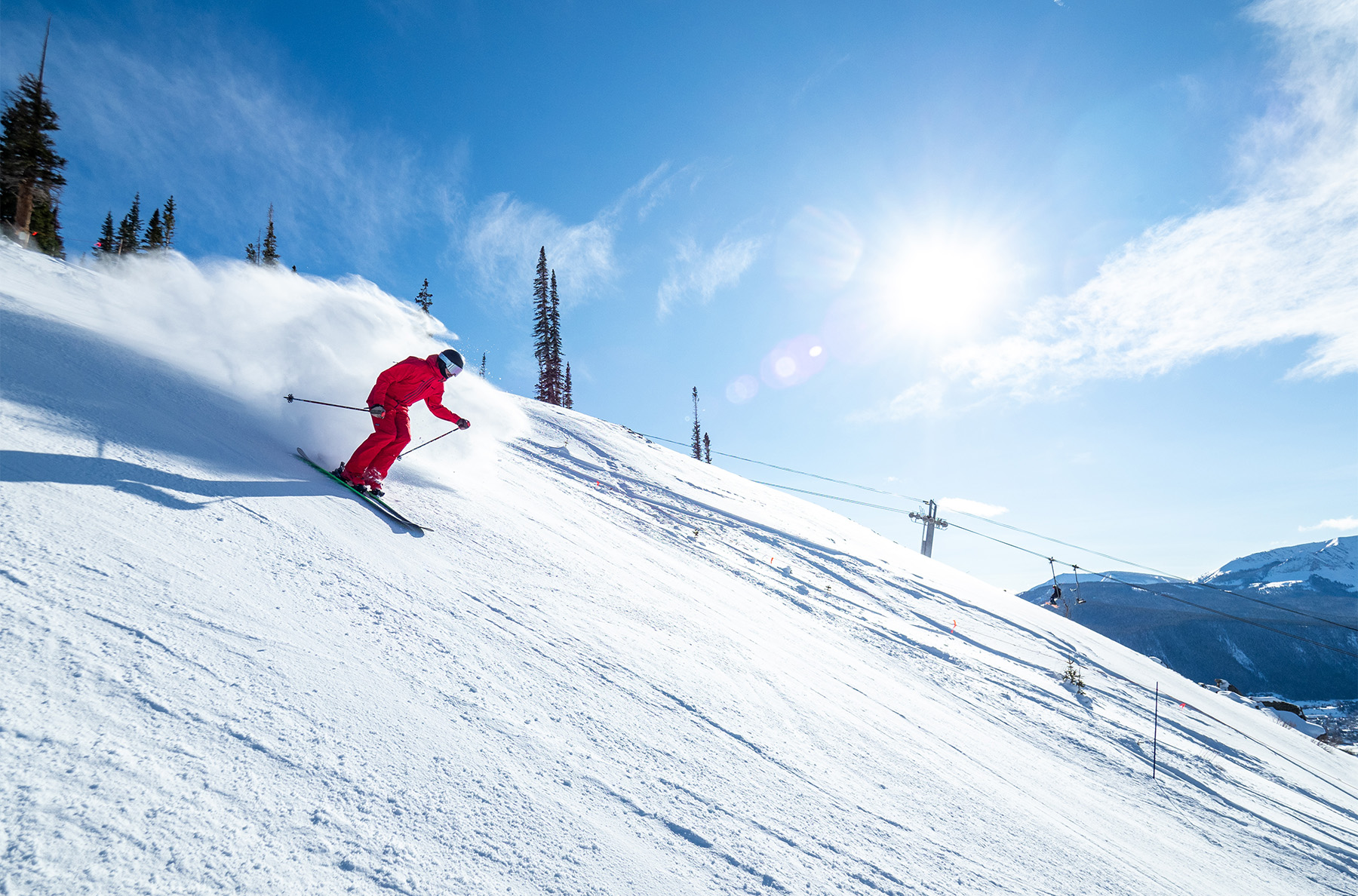
I also think the Blade Optic 92 could be a great candidate for mounting with a burly touring binding (e.g., CAST, Shift, Duke PT) for use as a resort and touring ski, since it’s quite light but heavy enough to the point that it doesn’t feel excessively light in most lift-accessed scenarios.
If you like the sound of all that’s been said about the Blade Optic 92 but are willing to deal with a bit more weight in exchange for notably better suspension and high-speed stability, then you should definitely check out the Blade Optic 96.
Bottom Line
The Line Blade Optic 92 is the lightest, narrowest, and least expensive ski in the Blade Optic collection, but just because it doesn’t share all the same fancy tech as the other skis in this collection, don’t think that means the 92 is some dumbed-down budget ski. It’s an exceptionally maneuverable, agile, and playful ski, while still being quite versatile across most conditions. It’s not a ski for those who want something really damp or that can lay down railroad tracks on ice, but it really stands out from its other ~90mm-wide counterparts when it comes to performance in off-piste terrain, soft conditions, and anywhere you can get it into the air.
Deep Dive Comparisons
Become a Blister Member or Deep Dive subscriber to check out our Deep Dive comparisons of the Blade Optic 92 to see how it compares to the Line Blade Optic 96, Atomic Bent 100, Line Sick Day 94, Salomon QST 98, Nordica Unleashed 98, Black Crows Serpo, Blizzard Rustler 9, Volkl M6 Mantra, Atomic Maverick 95 Ti, Line Blade, Shaggy’s Ahmeek 95, Armada Declivity 92 Ti, Dynastar M-Free 99, Black Crows Camox, Fischer Ranger 96, Fischer Ranger 94 FR, Season Aero, 4FRNT Switch, J Skis Fastforward, and J Skis Masterblaster.


It seems crazy that the measured weight of some skis can be so wildly different than the actual weight. Any thoughts on why they can be so far off?
Line doesn’t provide stated weights for all lengths of their skis, so as noted in the specs section, the stated weight is reportedly for the shorter 175 cm Blade Optic 92, whereas our measured weight is for the 182 cm. It still seems like a pretty big difference, but I don’t know why (and that’s the main reason we get measured weights on all the skis, boots, bindings, etc. that we review).
Looking at those photos, if this ski fits your definition of “deeply rockered”, I can’t imagine how you would typify the full rocker on my Volkl Shiro’s.
Your Shiros aren’t 92mm underfoot. It’s relative to other skis of similar waist width.
As previously commented. I agree with everything Luke and Dylan are stating, I’ve just some concerns about their durability. Mine’s looking supper beat up after a few days albeit in crappy conditions, but my other skis have dealt with the same conditions just fine.
How tall are you Dylan? My 14 year old is considering purchasing these and he’s 5’10”. He’s between the 168 and 175 I think. He thinks he wants the 168 – I think he should get the 175 if still growing! Thoughts?